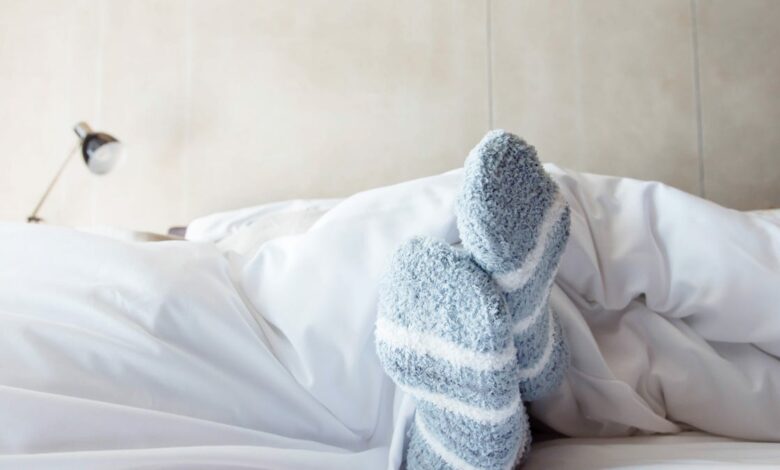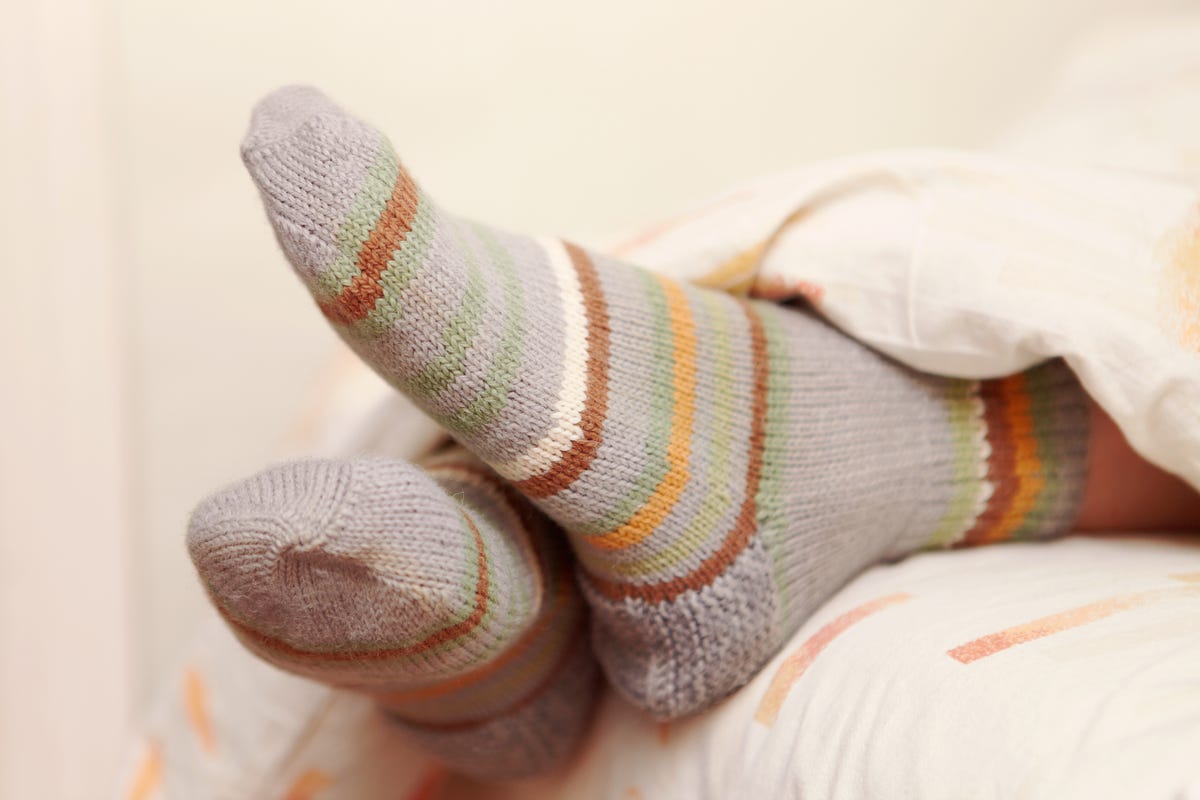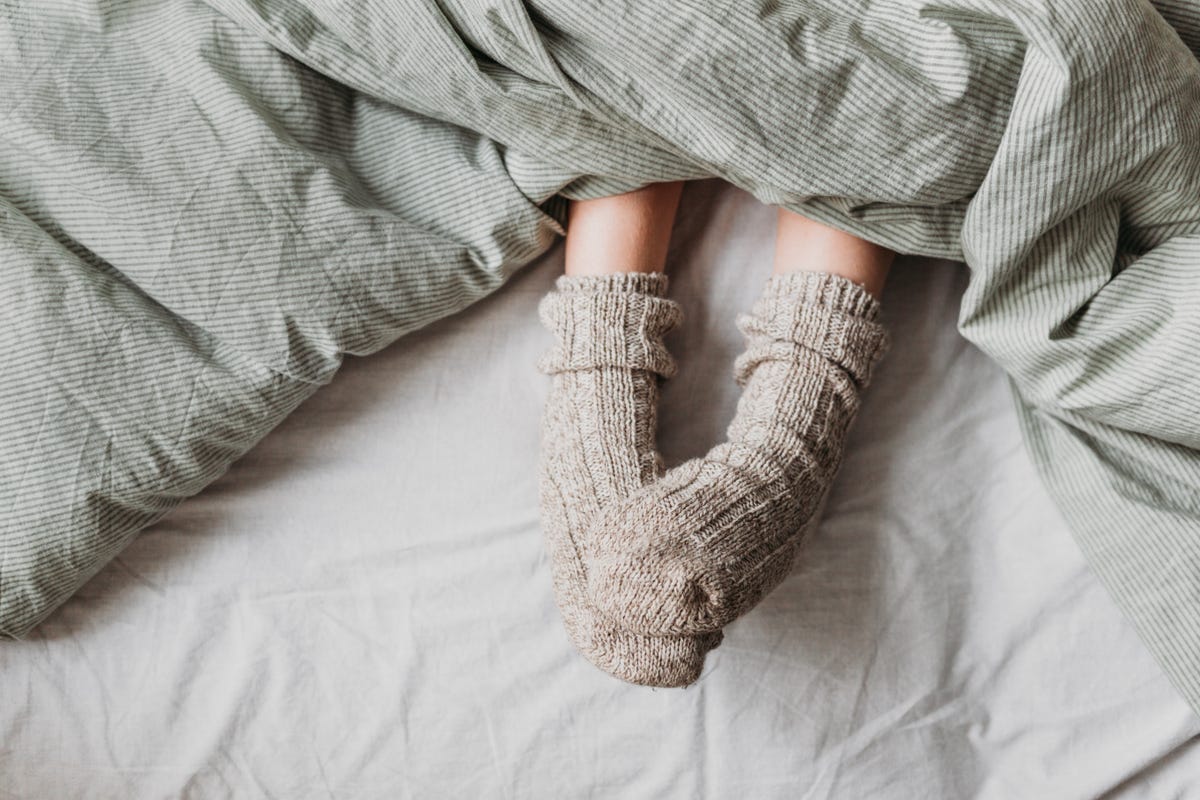Having trouble sleeping? Try this easy trick and get a better night’s sleep tonight




If you have trouble sleeping or often wake up in the middle of the night, the solution may be hiding in your sock drawer. As strange as that sounds, it’s true.
It’s well known that stress and certain health conditions can cause insomnia and restless nights, but there’s a lesser-known reason you might not be getting the sleep you need: cold feet. According to the National Library of Medicine, a Study from 2018 found that participants who wore socks to bed fell asleep faster, slept longer, and woke up less often than those who didn’t wear socks.

So, should you sleep with socks on? Keep reading to discover the benefits of wearing socks to bed, including the relationship between feet and sleep and who shouldn’t sleep with socks on.
For more help getting a better night’s sleep, check out our story on how to fall asleep in 10 minutes or less and our list of seven natural remedies for insomnia.
Read more: Best Sleep Socks of 2024
Does wearing socks help you sleep better?
Throughout the day, your body temperature naturally rises and falls in sync with your circadian rhythm, which is your body’s 24-hour internal clock. Here’s how it works.
Normally your body is in its warmest in the early eveningbetween 4:00 and 8:00 PM When you start to feel tired, your core temperature begins to drop, signaling to your body that it’s time for bed. Cooling down at this time can help you sleep more comfortably and prevent overheating during the night, which can lead to insomnia or poor sleep quality.
When your body senses that your feet are cold, it tries to compensate by raising your core temperature. Feeling warmer can make it harder to fall asleep.
Wearing socks at night warms your feet and dilates blood vessels. This process, known as vasodilationhelps your body dissipate heat through your skin, ultimately lowering your body temperature.
Read more: Best Weighted Blankets of 2024
Benefits of Wearing Socks to Bed
Sleeping in socks can help you fall asleep faster and get a better night’s sleep, but that’s not the only benefit of wearing socks to bed. Here’s how else they can help.

Reduce the symptoms of Raynaud’s syndrome
Raynaud’s syndrome causes the blood vessels in your limbs to shrink, reducing blood flow to those areas. As a result, the condition can make the affected parts of your body — including your fingers, nose, and toes — feel cold and numb. Sleeping with socks on can help keep your feet warm, which can help you less chance of a Raynaud’s attack.
Reduce hot flashes associated with menopause
If you suffer from hot flashes during menopause or night sweatsYou may be surprised to learn that wearing socks to bed can help you cool down. For a hot flash, your core body temperature rises — but as we know, keeping your feet warm at night helps to lower your temperature, which can counteract some of the heat loss during menopause.
Read more: Best Cooling Mattress Toppers for 2024
Reduce the symptoms of insomnia
Insomnia is a sleep disorder that makes it difficult to fall asleep, stay asleep, or get a good night’s sleep. It has many risk factors, including mental illness and other medical problems. Research has shown that warm your feet before going to bed helps you fall asleep faster, suggesting that wearing socks at night may relieve insomnia.
Prevents cracked feet
If you have cracked feet or dry heels, you may be able to heal them with a Foot Care Routine Before Bed that includes sleeping in socks. For best results, you’ll want to soak your feet, pat them dry, scrub off dead skin, and apply lotion or healing cream. Finally, put on a clean pair of breathable cotton socks to help seal in moisture.
Things to Consider
If you do decide to keep your socks on while you sleep, there are a few things to keep in mind, including the right type of socks to wear to bed. We’ll explain more below. It’s also important to note that wearing socks to bed isn’t for everyone. For example, if you have circulation issues or swollen feet, sleeping with socks on could reduce blood flow and make these issues worse.
What socks should I wear when going to bed?
Above all, you want to choose a pair of socks that are loose and comfortable. If they are too tight, they can affect your circulation. You should not sleep in compression stockings unless your doctor has recommended it.
Likewise, you should choose socks that are made of natural (rather than synthetic) materials. Natural fibers like cotton and cashmere are more breathable, which prevents bacterial growth and moisture retention.

If you go to bed with socks on, it is best to wear soft, stretchy socks.
Some of the best options for socks include:
Cotton socks: As a plant-based material, cotton socks are an ideal option for vegans or those who don’t want to wear animal products. They’re warm and allow your skin to breathe without retaining moisture, which is great for temperature regulation.
Cashmere socks: Cashmere is a superfine material made from goat hair. It is light and warm, but does not cause your feet to overheat.
Merino wool socks: Made from the wool of Merino sheep, this material is softer and thinner than traditional wool. These socks are excellent at wicking away moisture and are designed to keep your toes warm and dry throughout the night.
Bed socks: These are socks that are specially made for sleeping in. Bed socks are thick yet breathable and made of different materials.
Is sleeping barefoot bad for your sleep?
Sleeping with socks has its benefits, but that doesn’t mean sleeping barefoot is bad. Sleeping without socks won’t negatively impact your health, but as discussed above, if you suffer from insomnia, Raynaud’s syndrome, or menopausal night sweats, wearing socks may help alleviate some of your symptoms.
Do you have alternatives if I don’t like wearing socks?
If you don’t like wearing socks while sleeping, there are a few alternative ways to experience the benefits of sleeping with socks. One of the simplest options is to take a warm foot bath before going to bed, which is associated with better sleep.
Another option is to place a warm blanket or heating pad at the foot of your bed. This will keep your feet warm and improve circulation — without forcing you to wear socks.
A final alternative is to try your own rice socks. These are rice-filled socks that have been microwaved to provide a continuous source of heat as you fall asleep. These are not meant to be worn, but rather serve as a homemade heating pad.
To make rice socks, you’ll need a pair of sturdy socks, rubber bands, and six cups of uncooked rice. Once you’ve gathered your materials, pour three cups of rice into each sock and tie them off with a rubber band. Heat the socks in the microwave for a minute or two, then slide them under your blankets to keep your feet warm.
Can children sleep with socks on?
If your little one has trouble sleeping, ask your pediatrician if it is safe to sleep with socks on. Babies cannot regulate their body temperature just as effective as adults, so it is important to ensure they do not overheat.
To promote a better night’s sleep, try giving your child a warm bath before bed. It’s best to avoid heating pads, electric blankets, and hot water bottles in your little one’s bed, as these items can burn them or pose a fire hazard.




